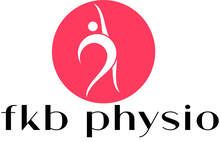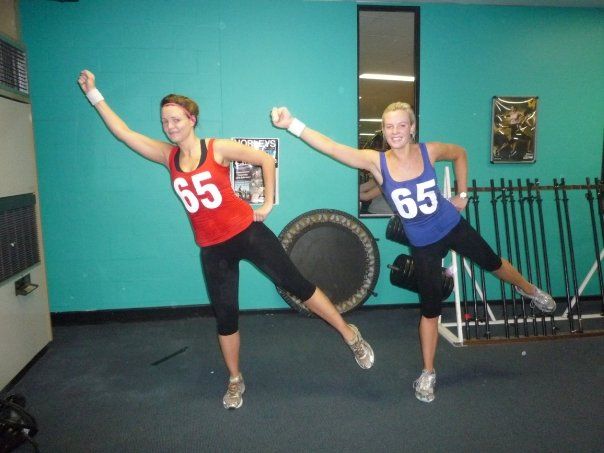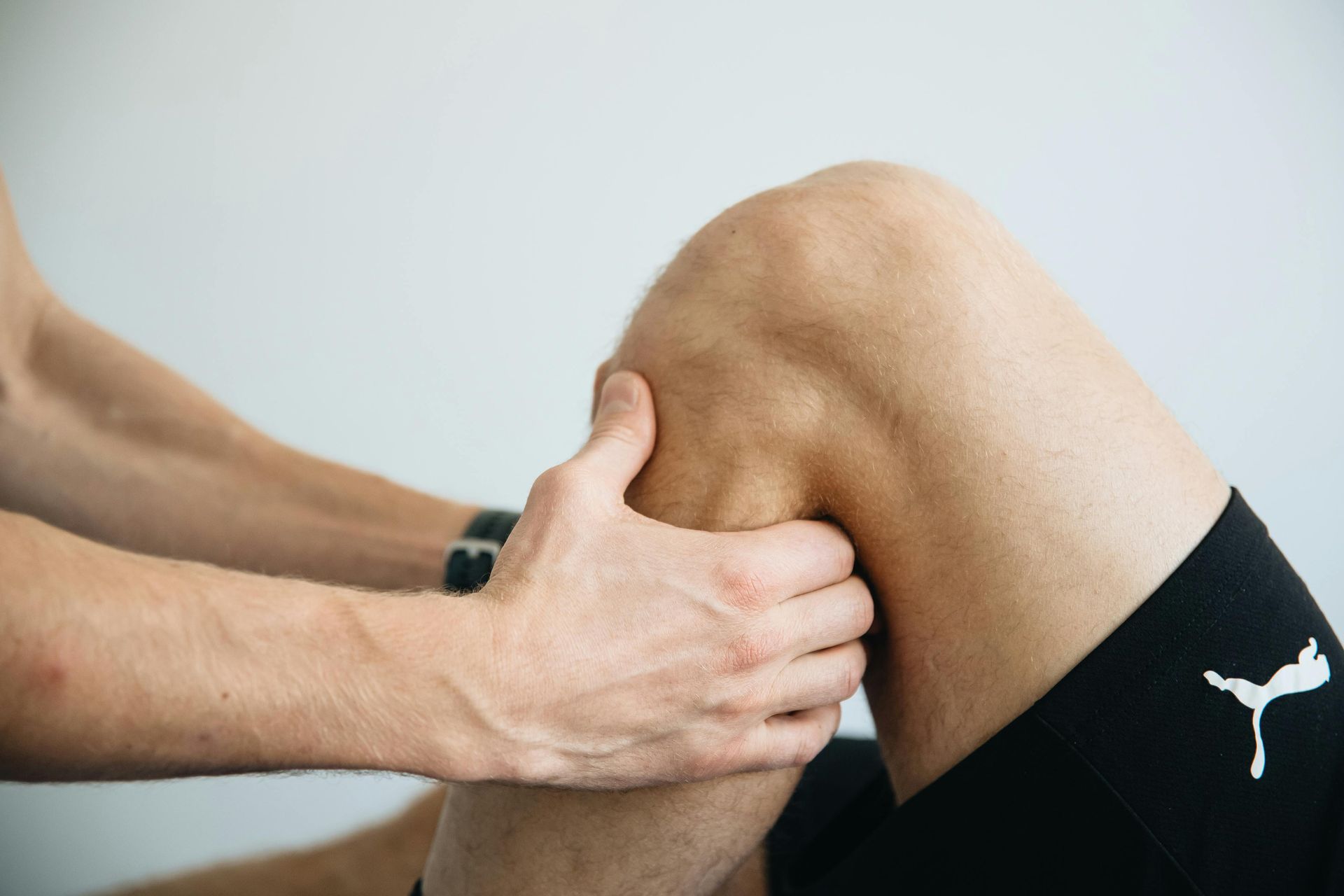
By Frances Brown
•
April 8, 2025
Before we get started... Osteoarthritis: Osteoarthritis refers to joint pain and stiffness with associated joint changes, such as thinned cartilage and additional bone remodelling around a joint (i.e. extra bone laid down around a joint, changing its shape). Osteoporosis: weakened bones - NOT related to osteoarthritis and is asymptomatic Rheumatoid arthritis: an autoimmune condition that requires specific management This blog post specifically discusses osteoarthritis.
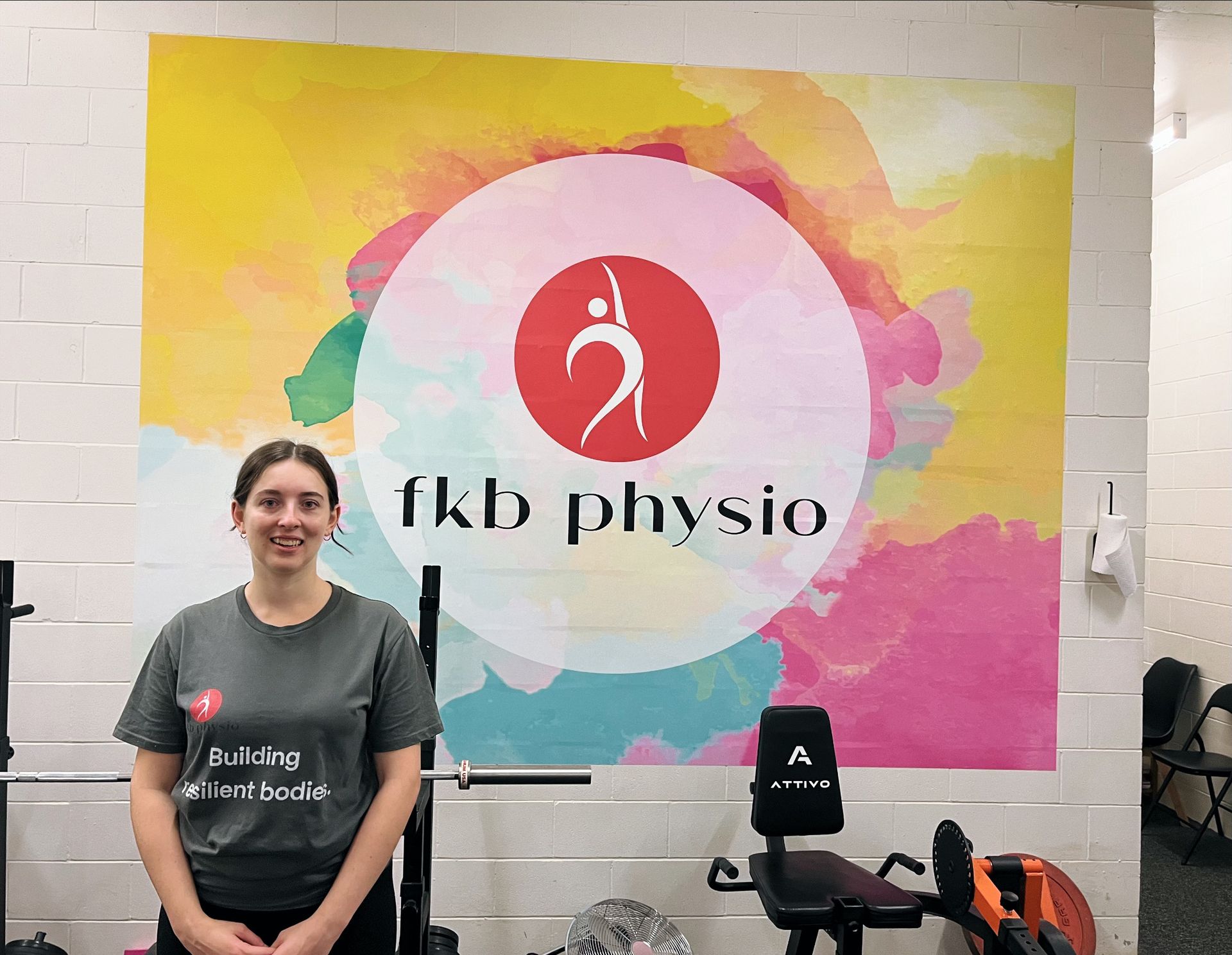
By Sarah Radziwill
•
November 30, 2024
From dislocating her knees putting on her jeans to approaching her first 100kg deadlift, our physiotherapist Sarah talks about why she chose to become a physio, and why she is so passionate about supporting people with pain and hypermobility to learn safe ways to move their bodies.

By Frances Brown
•
August 27, 2024
This year, healthy bones Australia released an updated position statement regarding the use of exercise to manage osteoporosis. This position statement was developed by an expert Working Group, Advisory Committee and a National Roundtable, and was released in February (2024). The guidelines are here if you want to check them out for yourself. In this blog, I will go over the major recommendations in this statement, as well as those made in similar guidelines that are available for the UK and Canada (as they are all slightly different). At FKB Physio we use a combination of these guidelines alongside clinical expertise to design our programs for osteoporosis prevention and management. DISCLAIMER: Please do NOT undertake any of the recommendations stated in this article on your own. There is an inherent risk associated with introducing exercise when you have poor bone health. The guidelines specifically indicate that exercise MUST be done under supervision. This article is NOT designed to be taken as medical advice. What’s osteoporosis again? If you want a bit of a refresh about exactly what osteoporosis and osteopenia are, you can click here. Briefly, osteopenia and osteoporosis are words that refer to poor bone health. A diagnosis is made once your bone density declines past a certain threshold. It is often only once a diagnosis of either osteoporosis or osteopenia has been made that people start to work on their bone health. Knowing that bone health essentially peaks at 30 and then slowly declines from there , it makes sense to both aim to maximise peak bone mass early in life , and work to reduce the decline in bone density associated with ageing as much as possible. This means paying attention to things that are good for bones as early as possible and continuing to do so across the lifespan. Exercise for osteoporosis management Exercise should always be part of osteoporotic management as medications may improve bone density but do not have any impact on reducing falls risk or sarcopenia (loss of muscle mass associated with ageing), or other impacts of osteoporosis such as loss of height and increased curvature of the upper back (hyperkyphosois). The osteoporosis guidelines specifically state that resistance training and balance exercises should be prioritised. Exercise obviously also carries some pretty significant other benefits, in that it can reduce the impacts of other co-morbidities such as high blood pressure and diabetes, among others. Additionally, independent of the relevance to osteoporosis and bone health, the WHO specifically recommends all adults participate in strength training at least twice a week. Less than 25% of adults in Australia currently meet these recommendations. This is something that is beneficial across the lifespan and I really do believe that encouraging all adults to take up strength training in a way that is enjoyable and sustainable for them is really, really important. Exercise for bone health recommendations I meet a lot of people who are very active and who have done their best to lead a healthy lifestyle and they have still ended up with osteoporosis, which seems very unfair! Remember that even with your best intentions, this condition can happen due to non-modifiable risk factors that are out of your control. I believe in trying to control the elements you can control, where possible, and it is here that having a little more information about what types of exercise are likely to be the most beneficial to the bones may be useful. Low impact exercise, such as mat pilates, walking, swimming, and cycling, will not have a positive effect on bone density (Kistler-Fischbacher et al., 2021). This is important to note as people often assume that the resistance offered with reformer pilates as an example is adequate, however, this does not appear to be the case. Running is also unfortunately not helpful for bone density - i will discuss why later in this post. Osteogenic loading – what is it? Osteogenic loading refers to loading that promotes bone growth or produces bone. During movement, the skeleton undergoes force from the muscles pulling on the bone, as well as ground reaction forces. Both of these types of force cause deformation of the bone or strain on the bone, which causes microdamage that stimulates the remodelling process (Warden et al., 2021). A particular magnitude of bone strain is required to facilitate the production of new bone (Healthy Bones Australia, 2024). It is thought that bone strain that is of a high velocity and high magnitude, that is, is large and is performed quickly causes the most significant response and consequently most significant improvement in bone health. It would seem that exposure to load also needs to be low volume (i.e. not too many repetitions) as the mechanoreceptors that detect mechanical loading of the bones become saturated quickly (Warden et al. 2021). As such, it seems that low repetition, low volume, high intensity doses of loading are the most effective. This translates to high muscle forces, i.e. lifting heavy weights, and high ground reaction forces i.e. impact loading (jumping). Exercises such as running, while being relatively high magnitude, are not effective due to their highly repetitive nature that lead to decreased sensitivity in the mechanoreceptors. It is also important to note that the loads required to facilitate bony adapation need to be significantly higher than those caused by activities of daily living. Bear in mind that the studies showing these findings are primarily animal studies and as such the results need to be interpreted with caution, however when we combine these findings with other research the findings become more likely, including: Observational studies showing increased bone density in sports with multi directional fast loading such as tennis as opposed to those with repetitive same direction loading such as running; Observational studies showing runners who strength train having higher bone density than those who don’t (Wardern et al. 2014) Studies such as the LIFTMOR trial that show improved bone density with heavy low rep lifting in comparison to high rep light lifting (Watson et al., 2017) We can be relatively sure that heavy lifting and high impact loading probably have some positive impact on bone health. 2024 recommendations (Healthy Bones Australia Position Statement): 1. Exercise prescription should follow general principles of osteogenic loading: The most osteogenic protocol includes low numbers of high intensity loads, including impact and resistance training 2. Exercise can reduce falls risk if performed > 3 hours per week and includes high level balance challenge. 3. Exercise for osteoporosis needs to include resistance training, balance training, and impact loading. 4. Exercise should be patient centred, with a focus more on how people can be active rather than messaging relating mostly to things that should be avoided. 5. Exercise interventions need to be tailored taking into account other co-morbidities. The osteoporosis guidelines specifically state that resistance training needs to be progressive, which means that the weights need to progressively increase over time where possible. These guidelines are fairly recent and quite a deviation from what was recommended historically for osteoporosis. Previously, high impact (i.e. jumping) and high intensity (i.e. heavy lifting) exercises were avoided in older adults and particularly those with osteoporosis due to the assumed risk of fracture it posed, however there have been few adverse events noted in recent studies using this type of exercise in participants with osteoporosis (Daly et al., 2020; Watson et al., 2017). That said, it is very important that this is done progressively over time, and if any period of time is taken off exercise, it must be re-introduced very gradually again. It is also VERY important to note that all guidelines suggest that this exercise should be supervised, as those with poor bone health do carry a higher risk of injury and as such exercise must be supervised and tailored by health professionals to minimise any adverse responses.

By Frances Brown
•
August 26, 2024
Prevalence Osteoporosis Australia estimate that in 2022, 6.2million Australians over 50 have osteoporosis, osteopenia, or poor bone health, which is 66% of all Australians over 50. Of these people, 22% have osteoporosis and 78% have osteopenia. It is estimated that 29% of health system expenditure on falls can be attributed to low bone density (Australian institute of Health and Wellness, 2023), and that osteoporosis and osteopenia cost the Australian healthcare system $2.75 billion annually. Though osteoporosis is thought to be something that primarily affects women, this is not to say that men are completely unaffected: men account for approximately 30% of osteoporotic fractures recorded. What is osteoporosis/osteopenia? Both of these conditions are diagnoses that are made based on your bone density, which is determined through a DEXA scan. The official diagnosis according to the WHO is made based on your T score, which is a measure of your bone density relative to an average healthy 30 year old person of the same sex. This is calculated based on how many standard deviations you are away from that person. If you are more than 2.5 standard deviations away from the 30 year old, you are considered to have osteoporosis. Being between 1 and 2.4 standard deviations away is osteopenia. Any better than this is considered normal. For people under 50, a T score is not used, rather a Z score is used which shows how far you are away from other people of your age and gender (Beck et al., 2017). This is likely because a T score is unlikely to be as sensitive at younger ages, that is, less able to detect an issue comparing to younger person so is more accurate comparing to your peers. Sometimes, on your scan you may see both the T and Z score. For example, I have had a patient in her 80s who had a T score of -1.2 that only just saw her into osteopenic range, which actually placed her above normal for her age, as seen with her Z score, which was +0.5. All of this is to say that these numbers are relevant, but are all recorded as relative values rather than set figures to aim for.
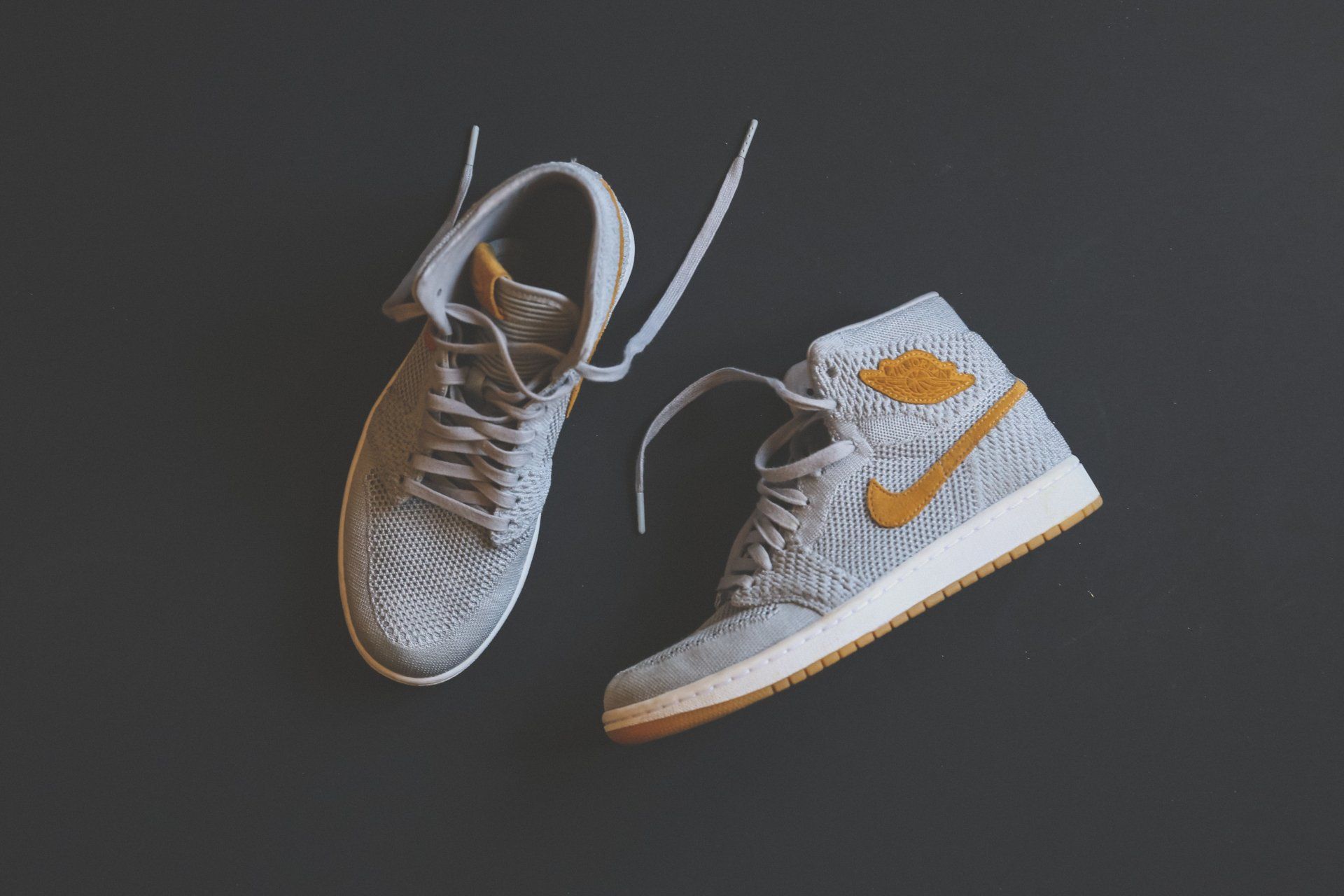
By Frances Brown
•
February 13, 2024
A common question that comes up for me in the clinic as a physio, as well as in my group strength classes and at my body attack classes is: What shoes should I be wearing for _____? First and foremost, I think it is important to mention that there has been a Cochrane systematic review (highest possible level of evidence) that covers this topic, specific to runners and running injuries. This review found that no type of footwear is better than any other in preventing injuries (from running). You can check out this study here: https://www.cochranelibrary.com/cdsr/doi/10.1002/14651858.CD013368.pub2/full Now information like this is often quite difficult to implement in the clinic, because you know as well as I that for you as an individual there will be shoes you have worn that feel GREAT, and others you have worn that feel TERRIBLE. Research is quite poor at reflecting this, and as such it can be easy to disregard. But what I take this to mean is simply that you cannot generalise advice to an entire population (e.g. statements like ‘the best shoes for running are ______’ are likely to not apply to everyone) and rather that what suits you as an individual is more important. So my first piece of advice is this: choose a pair of shoes that feel really comfortable for you, as this is most likely as accurate a measure of what is going to work for you as anything else that the shoe store person etc might say. ** note: i am not a podiatrist, who are the experts in this space. If you have foot pain or any major issue with your feet then you should consult a podiatrist for more tailored advice. ** Barefoot shoes: are they better for you? It is true that wearing no shoes, or barefoot shoes, will demand more work of your foot muscles. It can be argued that this is preferable to being reliant on super highly cushioned shoes, and could be better for your feet in the long term. HOWEVER. It requires a LOT of time to get used to this type of footwear. Because we spend so much time on our feet, and our entire body weight is resting down upon them, feet are very sensitive to any changes in footwear. If you do wish to move towards less supportive shoes, it needs to be done extremely gradually. For example, I used to wear off the counter shoe inserts to work, as I got plantar fasciiopathy immediately upon starting full time work and standing all the time (yes, at 21, lots of things are not a feature of ‘getting old’ but rather of introducing something new too suddenly). I can now tolerate barefoot shoes at work, but I would say it took a number of years to get here, and I still can’t wear barefoot shoes for more than a day or 2 in a row or I will start to feel that tell-tale lump under my foot start to reveal itself again. A suggestion of how to gradually work your way into less supportive footwear is to have a few pairs of shoes on the go, and swap into the minimalist shoes for just a few hours here and there per week. If you are thinking of wearing these types of shoes for something more than leisure wear, keep reading for my thoughts. Shoes for running and other repetitive high impact activities (e.g. aerobic classes such as body attack) You have probably heard two completely different narratives regarding the best types of shoes for running: Shoes with less cushioning are better as they mimic barefoot running which is more natural. This is more likely to reduce injuries in the long term. Shoes with more cushioning are better as they support your feet. This is more likely to reduce injuries in the long term. No wonder people are confused when there are these conflicting types of messages out there! Wearing barefoot shoes for impact exercise requires magnitudes more strength and conditioning of the foot to be able to handle it, compared to wearing this footwear for leisure only. It is probably preferable to aim for the least supportive shoes you can get away with, to promote as much strength of your feet as possible. This is unlikely to be barefoot shoes for most people, but it may be shoes with a lower drop (less of a steep decline from the heel to the toe) and a bit less cushioning that you have worked your way up towards being able to tolerate. If you are looking to take up running or another form of high impact exercise for the first time, it could take MONTHS and MONTHS to build up adequate resilience to tolerate minimalist footwear and most people will find that more supportive shoes help support them to take up the new activity more quickly with fewer issues. Research also indicates that having a couple of pairs of running shoes at once and alternating between a newer pair and an older pair is a great way to reduce your risk of injury, as it is common for something to start hurting as your shoes start to get older. This is not ‘proof’ that supportive shoes are in fact better for you, rather, that running on shoes that are becoming less cushioned is something you body is not used to, and doing lots of mileage in conditions you aren’t used to is often how overuse injuries quickly develop. Rotating your shoes (e.g. newer shoes for longer and high intensity/speed sessions; older shoes for shorter and slower runs) is a great idea. You can check out this study here: https://pubmed.ncbi.nlm.nih.gov/24286345/

By Frances Brown
•
August 13, 2023
As part of my job, it is common for me to introduce people to the gym who may have never stepped foot in a gym in their lives before. I understand that it can be very daunting to step into a gym, let alone onto the weights floor if this is new to you. I noticed that a lot of things that seem obvious to me in a gym setting are not obvious at all to people who are new to training, so I thought I’d compile a list of common ones and share them with you. How to take the clips on and off You push down on the little bit (often, but not always, a different colour) in the middle of the clip while pulling up on the clasp part. Hard to describe in words, check out the video!
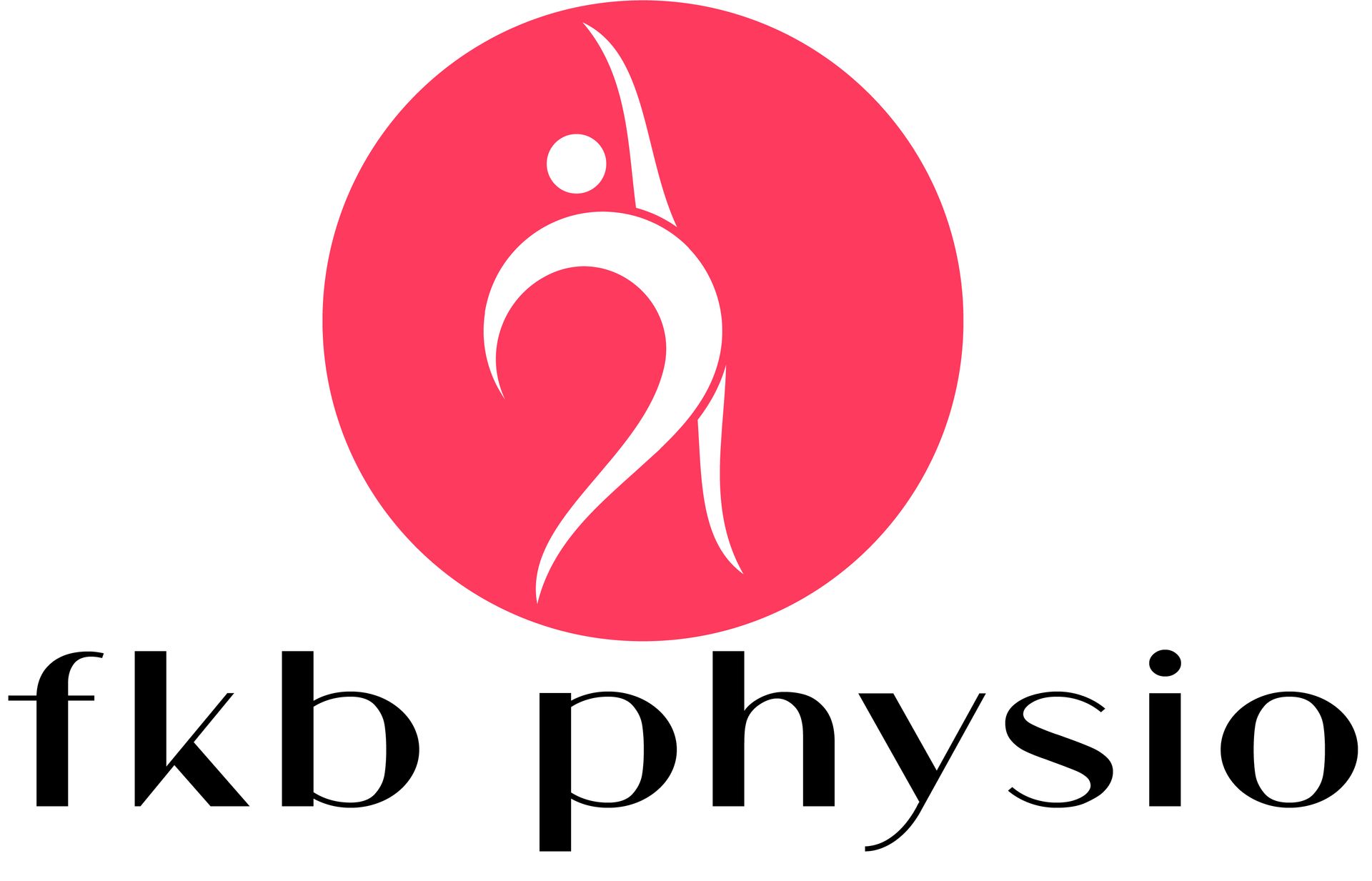
By Frances Brown
•
July 31, 2023
On the third anniversary of opening FKB Physio I thought it would be timely to reflect on my journey and share some of it with you. It may surprise you to know there was a time when I truly believed I had made the wrong choice in selecting physiotherapy as my career and was on the brink of quitting! How much things have changed since then. Why I became a physiotherapist I decided to study physiotherapy when I was actually in first year engineering. It never occurred to me at school that I might want to be a physiotherapist. I associated physiotherapy with girls who were sporty, which I was not. I was always more interested in the academic side of school. That said, I did play sport. I played tennis consistently (thanks to dad who took me to all my games on the weekend and encouraged me to keep it up!), and from memory I also played softball and volleyball, though absolutely did not take them seriously and probably selected them because they were easy. I was also lucky enough that my parents somehow introduced me to the local gym (what is now Goodlife Ashgrove but was then Ashgrove Body Designers) and I think from about grade 10 I had a membership and would go to body combat, body balance, and body attack. I remember my fitness gradually going up each year so that by year 12 I actually placed in the top 10 in the cross country, simply because I ran the whole way and almost no one else did! I was all set to become a software engineer when I finished school, however, I found the course extremely boring and the mathematics was beyond me, despite thinking I am a fairly mathematically oriented person. I went along to a lecture with a friend who was studying human movements (a biology lecture, from memory), and found it more interesting than anything I’d learned in my course! At the 6 month point, halfway into my engineering first year, I decided it wasn’t for me. At that time, I’d also started going to Body Attack and Body Pump ALL the time at the gym, as well as running to and from classes in my dunlop volleys that I wore to work (in the Coles Deli). Unsurprisingly, I developed shin pain and went off to the physio to sort it out. This event, combined with my dissatisfaction with my engineering degree, and attending that lecture with my friend, made me decide to try swapping to physiotherapy instead. I also became a group fitness instructor in the 6 months between finishing engineering and starting physio, a job which I still do now. The course change was absolutely the right decision. I enjoyed physiotherapy immediately, though I found having to interact with people in such a close and fairly intense manner extremely challenging. I am an introvert and a perfectionist, and those things are pretty hard to manage at 18 as it is, let alone in a university course that demands you perform assessments on your classmates in exams! I repeatedly was called out for being too blunt, too rude, too cold, unapproachable, unfriendly, and being unable to form a rapport with clients. In fact I think I actually had a ‘fake’ patient that we had at uni (for practice) complain about me to one of our lecturers. Not off to a great start in the profession! Here's a few photos from back in the day!
